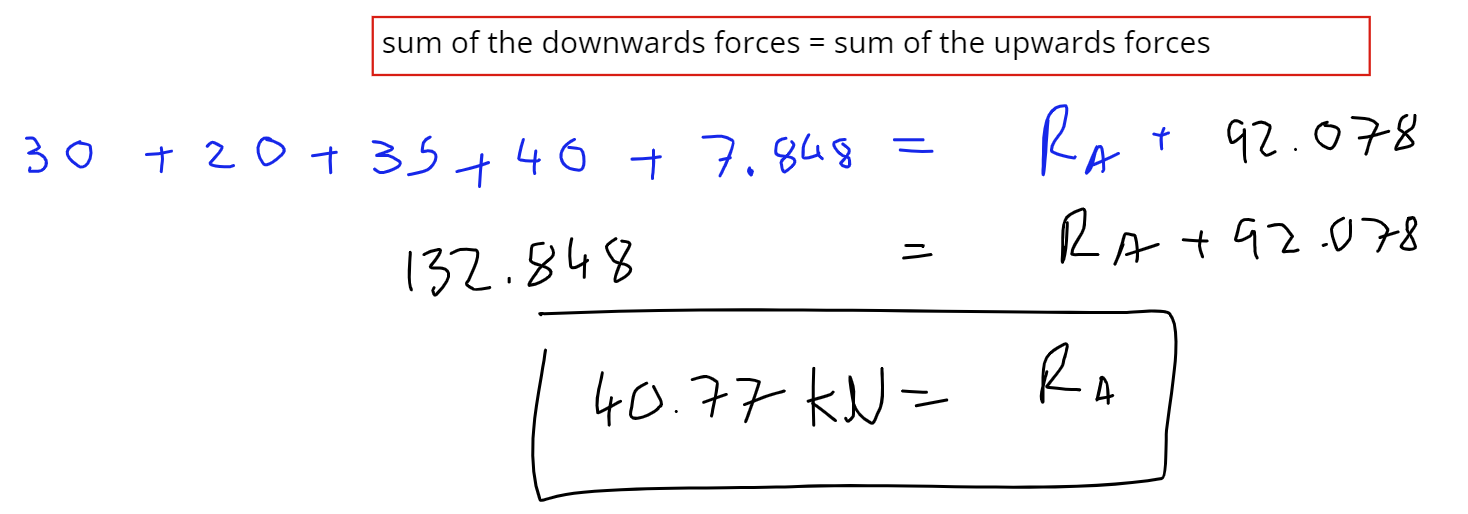This is a beam question, first we will draw a picture of it so we can see what is going on. We also need to label each of the weights, masses and forces acting on the beam, We will give them nice easy names, such as W1, W2, W3, UDL for uniformly distributed loads, BEAM (for the beam mass) and RB for the Reaction force at B.

I have also drawn a little guy standing at B, this is help me conceptualize what is going on. I imagine this as being a table, now imagine lifting the table up at where the support B is at, the force you would feel by lifting the table by just a little bit would be the force at that point. We could also walk around and lift the beam from point A, this would be the force experienced at point A.
Luckily for us, we only need to make this calculation once, and then we can get both RA and RB due to a few concepts in physics, we will state these now for the sake of the examiner, we have to state all equations and theorems used:


Now lets get to building a table with all of this information, I find it best if you can make a mnemonic with the table headings:
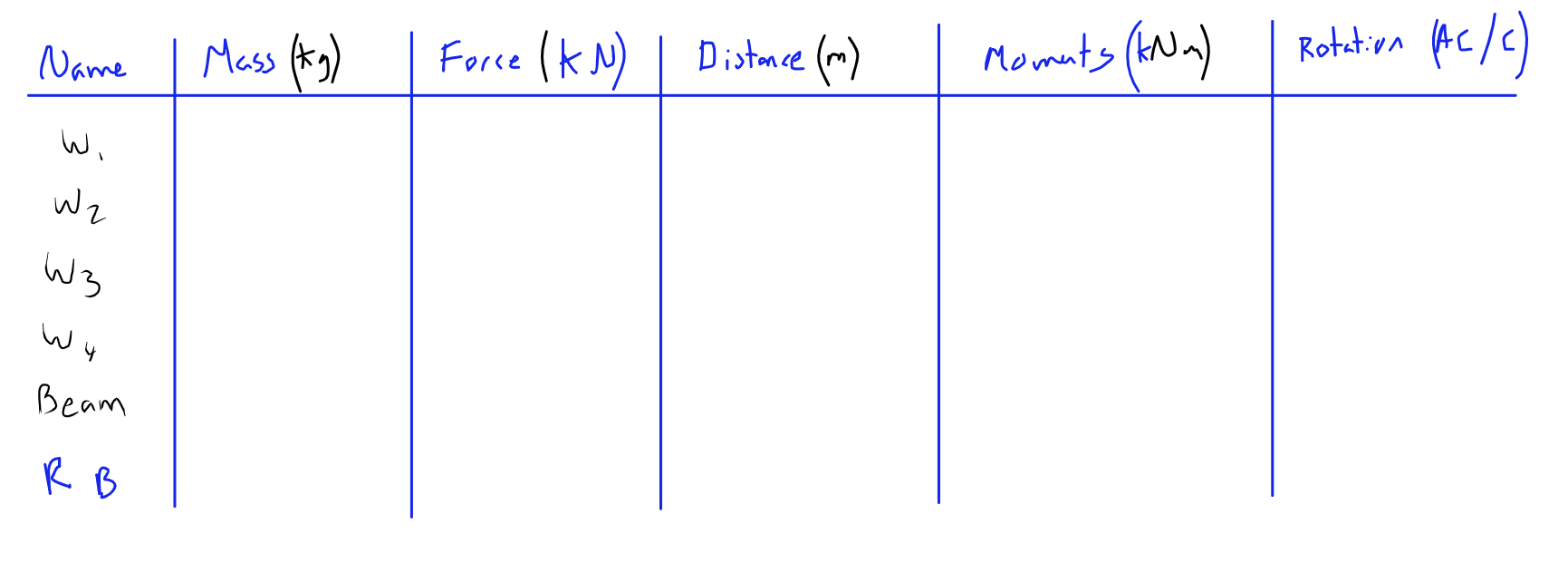
Lets fill in what we already know, this is "taking moments about A" which means we treat A as the pivot, this table is so good it doesn't matter how we alter the question, it will always work.
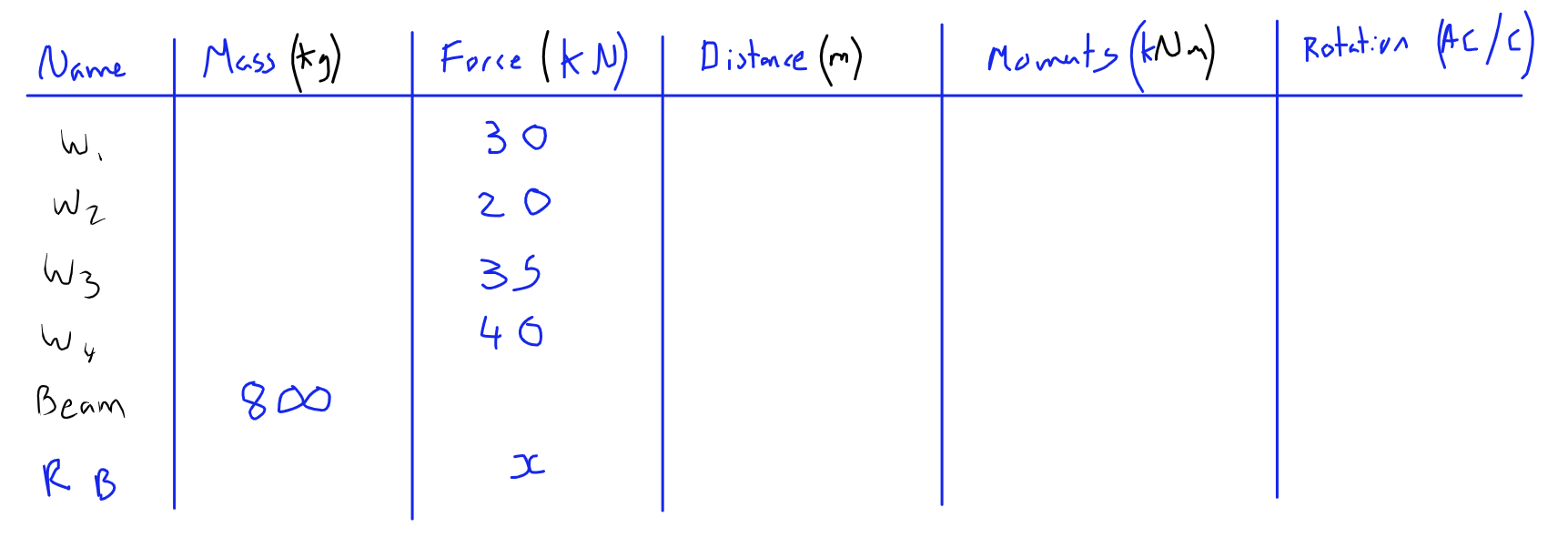
Will fill in the Mass in KG for those that we have, then to fill in the force column, we multiply by gravity (9.81).
I have used "x" as the reaction force at B as this is the variable we are solving for, we can carry it through the rest of the process without any problem.
Next, we need to fill in the distances from the pivot, it doesn't matter if it's to the LEFT or RIGHT, the direction of the turning force will be taken into account in the last column (Rotation). Getting the distances correct actually seems to be the most difficult part of this!
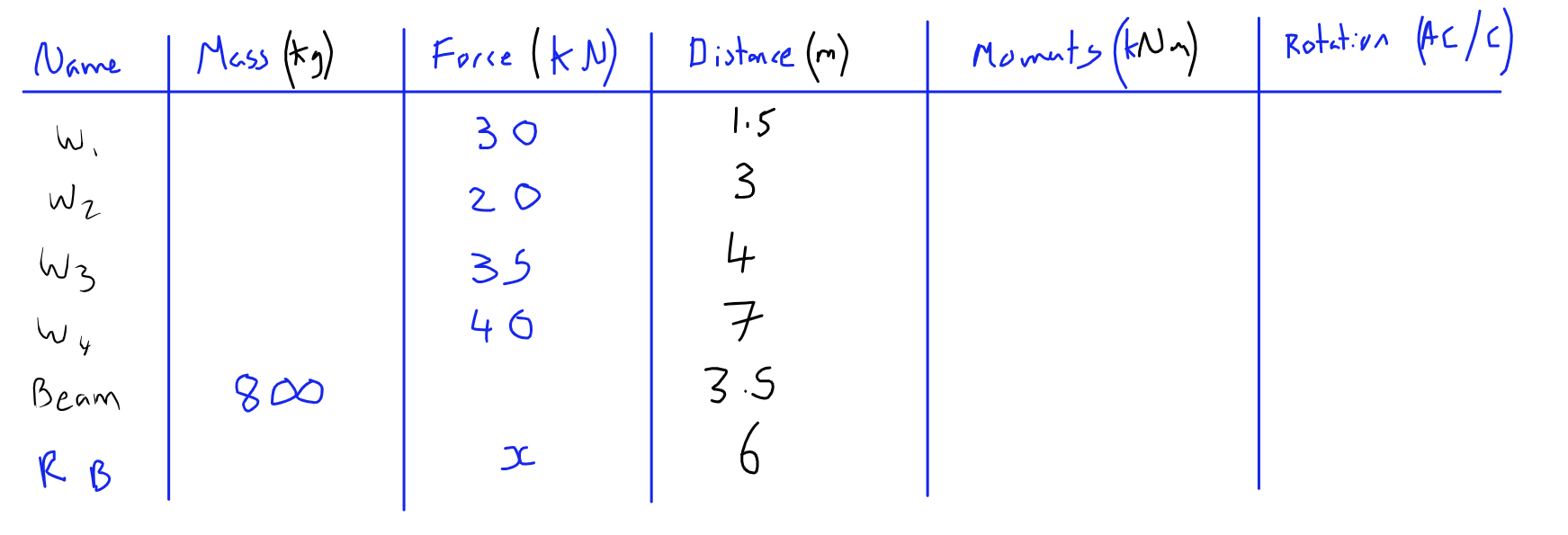
Next moments are calculated by multiplying the force by the distance:

Finally, we need to consider the diagram, and see if the beam was left to rotate freely, which way would each of the forces wish to move. I have coloured clockwise movements in RED and anticlockwise movements in BLUE. as you can see this poor guy is working against ALL of the other forces!
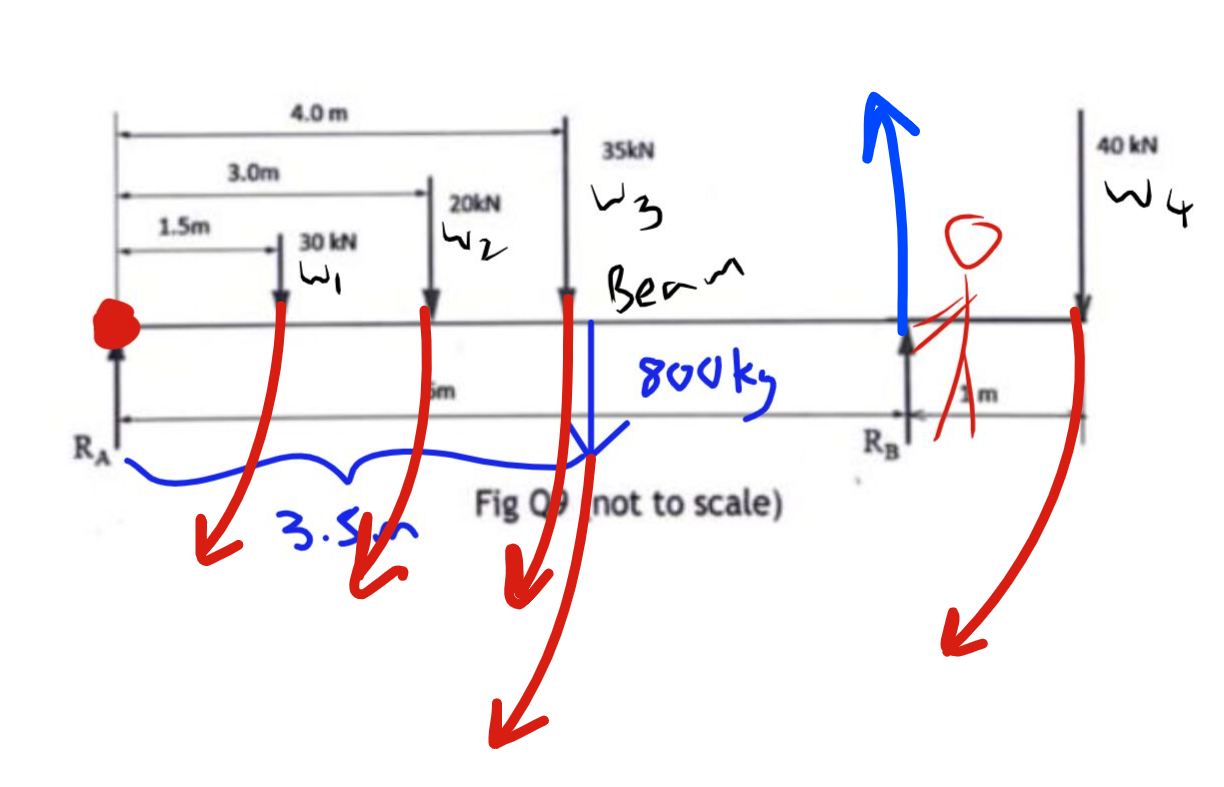
Now we can finish off our table, and then get to using it: 
As previously stated, the Sum of the anticlockwise moments must be equal to the sum of the clockwise moments. This is because beam is not flying around all over the place (or spinning) If the forces were not in equilibrium it would be moving. So, using the last two columns, and this statement, we can say the following, and solve for x:

So now we have the Reaction force at B. Now using the other previously mentioned statement (the sum of the downwards forces must equal the sum of the upwards forces) we can solve for the reaction for at A. This is because the beam is not moving, so the push down must be equal to the push upwards:
We just have to be careful to pick out the correct numbers, we need the downwards forces, which is found in the 3rd colum.
